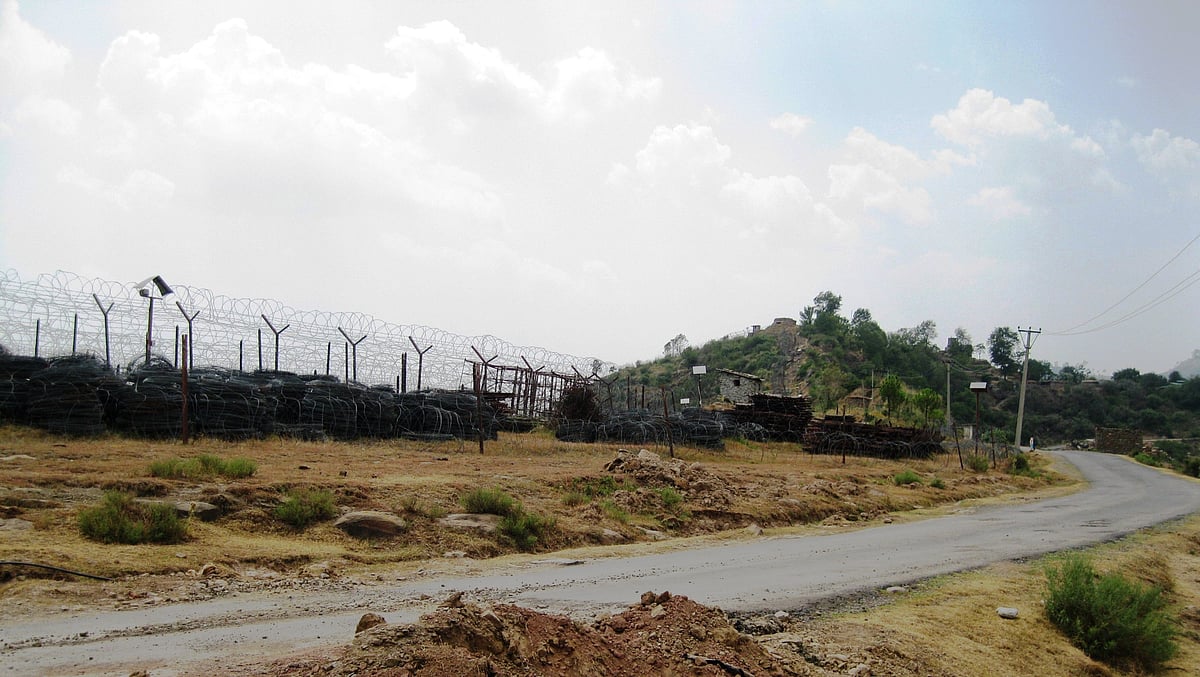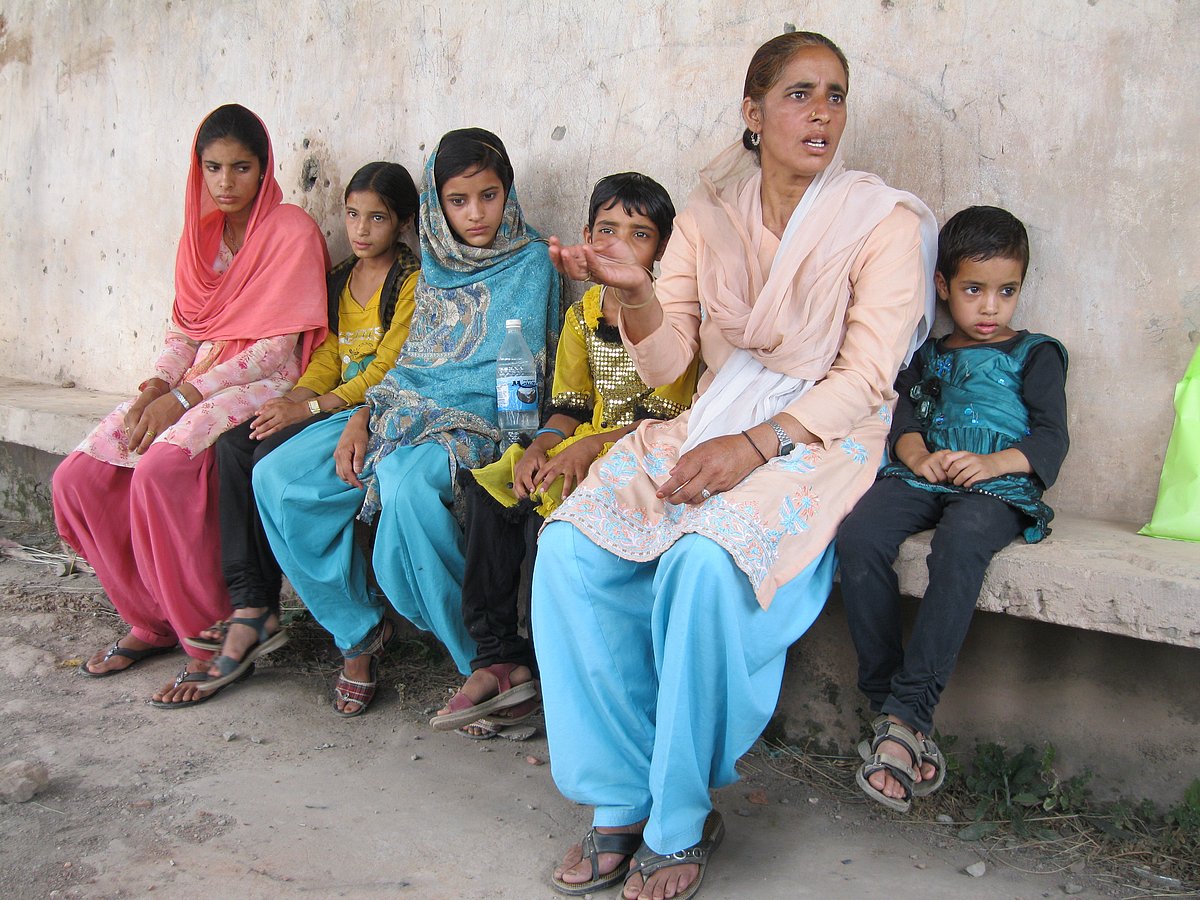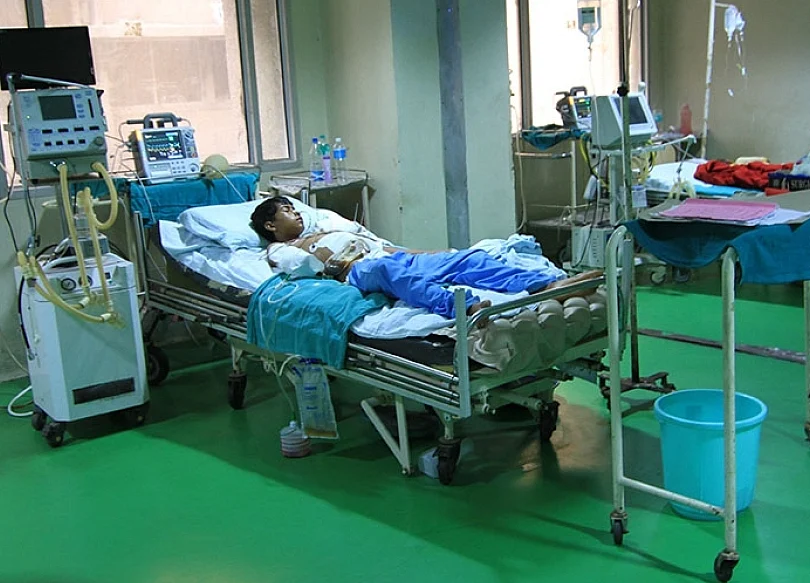The trauma of being trapped in Balakote on LoC
National Herald journalist recalls some visits to the village which stands kilometers away from where the Indian Air Force jets recently bombed a target across the LoC in Pakistan

Well before the fighter jets roared over Balakote village—that sits on the Line of Control (LoC) with Pakistan in Poonch district, Jammu and Kashmir—the residents had already woken up to the sound of raging gunfire followed by heavy shelling during the wee hours of Tuesday.
They could not sleep even a wink thereafter. And almost four hours later, many of them heard over radio that the Indian Air Force had bombed terrorist camps across the LoC, supposedly a few km from their homes.
Balakote is a representation of the long-standing tensions between India-Pakistan along the disputed border. The run-down garrison village doesn’t have much to boast when it comes to infrastructure or basic amenities.

Poonch district, where Balokote is located, was divided between India and Pakistan after the creation of the ceasefire line which was renamed as the LoC under Simla Agreement. Of the erstwhile principality, half of the tehsil Haveli, some part of tehsil Mendhar, half of Balakote and whole of Bagh and Sadhunti tehsils went to Pakistan. The area under Pakistan’s control constitutes a major part of Pakistan Occupied Kashmir.
When I first visited the village a couple of years ago, a nonagenarian resident had this to say: “Even animals in zoos are treated better than us. The government has housed us in an enclosure but our condition is worse than caged animals. Either India and Pakistan should go for an all-out war and settle scores once and for all or they should just let us live peacefully.”

Along the 103-km-long-LoC which bounds Poonch on its three sides, many villages are literally “open prisons” as they have landmine fields on the one side along the zero-line with Pakistan, and on the other there is a three-tier fence of concertina wire. The fence which is technically called the Anti-Infiltration Obstacle System was constructed by the Indian Army after a ceasefire in 2003.
In most of the areas, the fence has been erected several km behind the zero line, leaving the forward villages sandwiched between fence and zero line.
Of the total eleven villages in Balakote tehsil on the Indian side, as many as five including Tarkundi, Datote, Behrooti, Sohala and Panjanihave been completely fenced by the Army. And the remaining six villages, Dharati, Sehsuta, Ramlutha, Balakote, Dharuti and Basooni, have been partially divided by the fence.
“The army has occupied vast tracts of land here and the fence runs through agricultural land, but poor farmers are never compensated,” village sarpanch, Karamat Hussain, had told me, while taking me through the undulating terrain of the village, tucked away in the hilly region. “The army has even fenced out our graveyard and a shrine.”

Every time I visited the village, Hussain would help me gain entry inside the village as the army don’t allow “outsiders”. The residents can enter and exit the fence gates during specific hours between sunrise and sunset only after producing special ID cards issued by the Army.
“A Panchayat Ghar and a dispensary (Ayurvedic) is the only government infrastructure that we have in our village but they are also in shambles,” he had once lamented citing lack of basic amenities and government services. “We don’t know where the border area development fund is going?” he complained.
Hussain had the firm belief that most of the problems that encounter the villagers would get resolved if media started reporting them. He was kind enough to accompany me to the homes of the landmine survivors and other victims of the border conflict.

In his village, we met over two dozen landmine amputees and survivors of shelling and firing. Some of them may have died in abject poverty by now, awaiting monetary assistance from the government.
Hadaith Ullah, who was 70 then, had lost one foot while working as porter with the Army. He was 20 at that time. Mirza Khan, who was 90, had lost his leg while he was on Army fatigue in 1967. A few years ago, his 17 years old grandson lost his foot in a landmine explosion. Then fifty- year- old Mohammad Khan recounted how he was 13 when he survived a mine blast but only after losing one foot.

Hussain had also taken me to the mud houses of several residents who had lost their livestock in landmine explosions and shelling. We met Gulkhar, a widow and mother of six daughters, who had lost three buffaloes – the only family asset and source of income – when the cattle wandered over to a mined pasture a few months ago.
“Despite reporting the matter to the local administration, I haven’t got any relief yet,” she had complained. Her family, ironically, was categorised as Above Poverty Line, as a result of which she wasn’t entitled to a widow’s pension and other benefits promised under social welfare schemes.
“Most of our land is infested with mines; the rest is rocky and arid. Only a small portion is cultivable,” she told us, while narrating the stories of her neighbours, Razia Bi, and Sakina Bi. We were told that both had lost their husbands to shelling from across the border. But neither of them received any financial assistance from the government.

During my subsequent visits, I came across scores of such cases wherein the survivors or the bereaved families had been struggling for daily survival in the absence of State protection. Incidentally, most of the residents had accepted explosions and bullets as acts of providence.
Hussain used to work in Dubai. He had to return after his younger brother, Mehmood Ahmed, lost his limb in landmine explosion in 2000. Ahmed, a tenth standard student at that time, had become mentally unsound after the trauma. He later went missing and the family never heard of him thereafter. Hussain’s second brother, Mohammad Aziz, had also lost a leg in a landmine blast in 1984.
On India’s Independence Day 2015, a mortar shell propelled from across the border killed Hussain on the spot along with five others, leaving several others injured. He was 52. Two persons succumbed to their injuries later. The youngest victim was Shahnawaz, 13, who had his left shoulder fractured and the lower part of his right arm severed.

Not long ago, Pakistani mortar shelling killed five members of a family and left two sisters, aged 11 and 5, wounded and orphaned in the village. They lost their parents and three brothers when a shell ripped through the roof and exploded in their house in March last year.
Even though death and bloodshed are no strangers to the residents of Balakote, this time they are more worried than ever. “Many rumors of border clashes are making the rounds. Then there are threats and counter threats on social media and media. It is always Poonch that becomes a flashpoint between India and Pakistan over border hostilities,” a resident told the National Herald over the phone, wondering “Why doesn’t India and Pakistan choose Rajasthan, Punjab or Gujarat as the battlefield? Haven’t we suffered enough?”

Follow us on: Facebook, Twitter, Google News, Instagram
Join our official telegram channel (@nationalherald) and stay updated with the latest headlines
Published: 27 Feb 2019, 1:59 PM